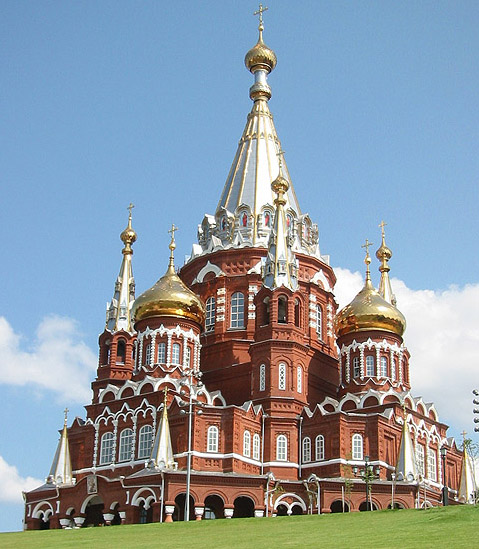Notes on the Russian Calendar

St. Michael's Cathedral (Собор святого Архистратига Михаила) in Izhevsk. Photo credit Noah Rucker.

As you study Russian history, you may notice some peculiar ways that dates are mentioned. That is because of the unique history of the Russian calendar.
Before 1600, most of Europe was using the Julian calendar that dated all the way back to Julius Caesar. Because of the way that calendar was calculated, the Julian calendar was/is off by 1 day every 128 years.
Because of the growing error with the calendar, Pope Gregory--no need to know what number Gregory he was--adopted a revised calendar in 1582, now called the Gregorian calendar. This calendar gradually spread through Europe.
Ok, back to Russia. When Peter the Great became tsar, the Russians were using a calendar that was largely Julian but that was also based on Byzantine influences. That meant that the start of the calendar year was 1 September and not 1 January. That also meant that the years were numbered from the creation of earth and not the birth of Christ. Peter revised the calendar by decreeing that the year start on 1 January and that the years should be numbered from the birth of Christ. But Peter also decided to continue to use the Julian calendar instead of converting to the Gregorian calendar. His calendar decisions caused quite a bit of discontent amongst some in Russia.
So, roughly speaking, in the nineteenth century, the Russian calendar was 12 days behind the Western European calendar. It was/is important to know which calendar was/is being used for the date of any event in Russian history were. So, you might see something like 1 March O.S. (The O.S. means the “old style,” or Russian, or Julian calendar); you might see something like 15 May 1862 N.S. (The N.S. means “new style,” or European, or Gregorian calendar); you might even see something like 25 October/6 November 1917, which means 26 October “old style” or 6 November “new style.” It can get confusing. Remember, it is the same day (just a different calendar).
Thus, when the October Revolution happened, it was 25 October according to the Russian calendar, but 7 November according to the Gregorian calendar–a similar situation with the February revolution, according to the Russian calendar, but the March Revolution according to the Gregorian calendar.
The Bolsheviks eventually decided to get in line with the rest of Europe and changed calendars to the Gregorian calendar on 1 January 1918. The Russian Orthodox Church continues to use the old Julian calendar, and that meant that my family always celebrated Russian Christmas eve on 6 January.
Some suggested websites:
- Some wiki entries:
- Some information on calendars:
- Some information on Russian Christmas